Economy

BEA: U.S. GDP Tops 4 Percent in Second Quarter
Written by Peter Wright
June 28, 2018
The growth of U.S. gross domestic product has improved for the last eight quarters on a trailing 12-month basis and in second-quarter 2018 was the best since third-quarter 2014.
The first estimate of the growth of U.S. GDP in this year’s second quarter was 4.1 percent, up from an upwardly revised 2.20 percent in the first quarter. The third estimate of second quarter GDP growth released on Thursday was 4.2 percent.
The Bureau of Economic Analysis (BEA) has changed and backdated the base of their GDP calculation from chained 2009 dollars to chained 2012 dollars beginning with the Q2 2018 data. In addition to changing the base, the BEA made data revisions back to some time before 1970 when our data stream begins.
In its latest review of the U.S. economy, the IMF wrote: “The near-term outlook for the U.S. economy is one of strong growth and job creation. Unemployment is near levels not seen in 50 years, and growth is set to accelerate, aided by a fiscal stimulus, a recovery of private investment and supportive financial conditions. The balance of evidence suggests that the U.S. economy is beyond full employment. A slow but steady rise in wage and price inflation is expected as labor and product markets tighten.”
GDP is now measured and reported in chained 2012 dollars, and on an annualized basis in the second quarter was $18.5 trillion. The growth calculation is misleading because it takes the quarter-over-quarter change and multiplies by 4 to get an annualized rate. This makes the high quarters higher and the low quarters lower. Figure 1 clearly shows this effect. The blue line is the trailing 12-months growth and the black line is the headline quarterly result. On a trailing 12-month basis, GDP was up by 2.87 percent in Q2, which was the best result since Q2 2015. To put that result into perspective, the average in 34 quarters since Q1 2010 has been 2.20 percent. The blue line in Figure 1 shows the slow but steady progress of the trailing 12-month result since Q2 2016.
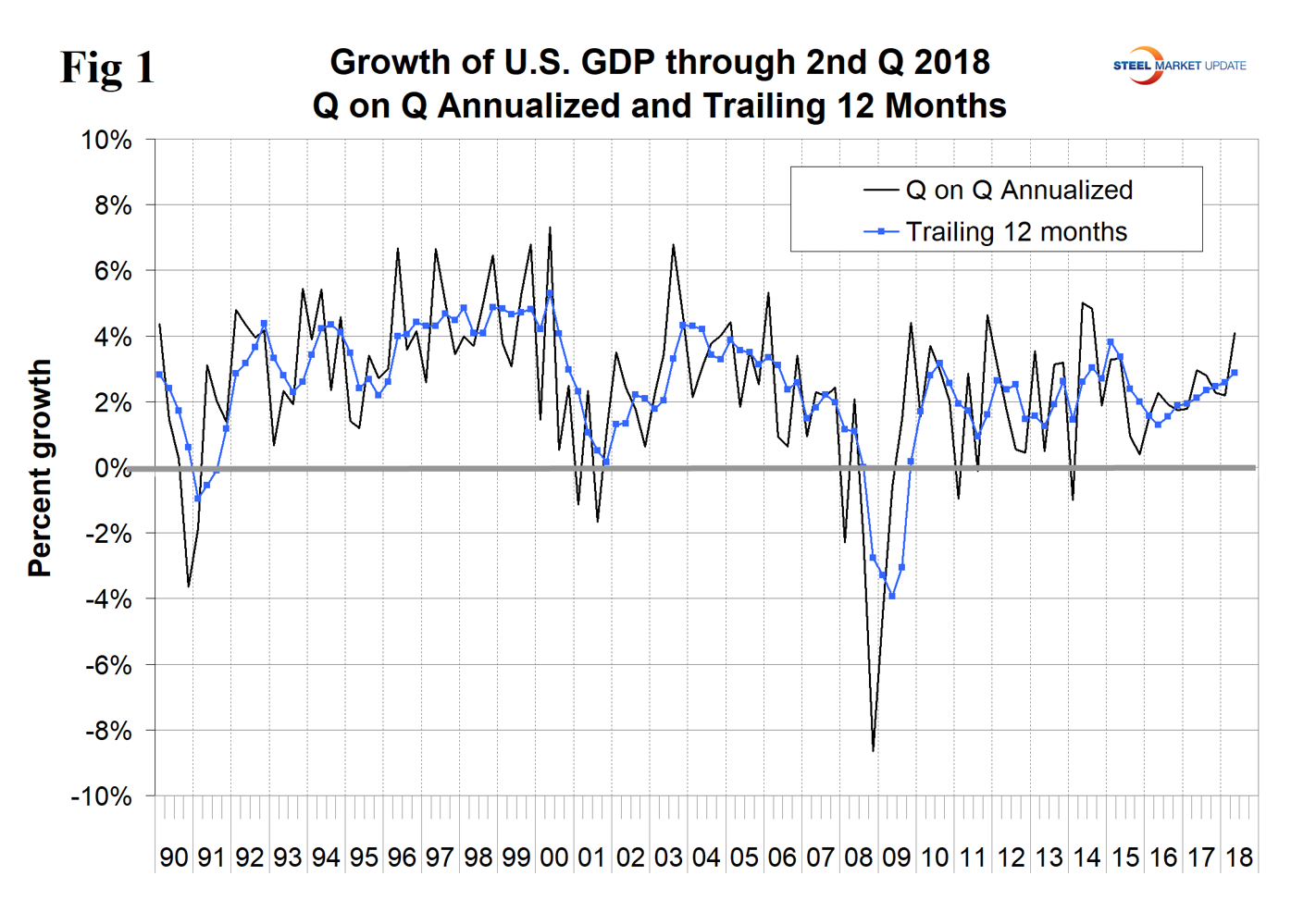
Figure 2 shows the headline quarterly results since 1990 and the April 2018 Congressional Budget Office forecast through 2022. The CBO forecasted a 3.5 percent growth rate in Q2 2018 and that 2018 as a whole gets a boost from the tax break before falling back in 2019. The IMF forecasts global and national economic growth each April and October. We will report on the October forecast here after it is released on about Oct. 8. In the April update, the forecast of U.S. economic growth in 2018 was revised up for the years 2018 through 2020, then revised down for 2021 and 2022. The IMF growth forecast for 2018 was revised up from 2.3 percent to 2.9 percent, and the 2019 forecast was adjusted from 1.9 percent to 2.7 percent.
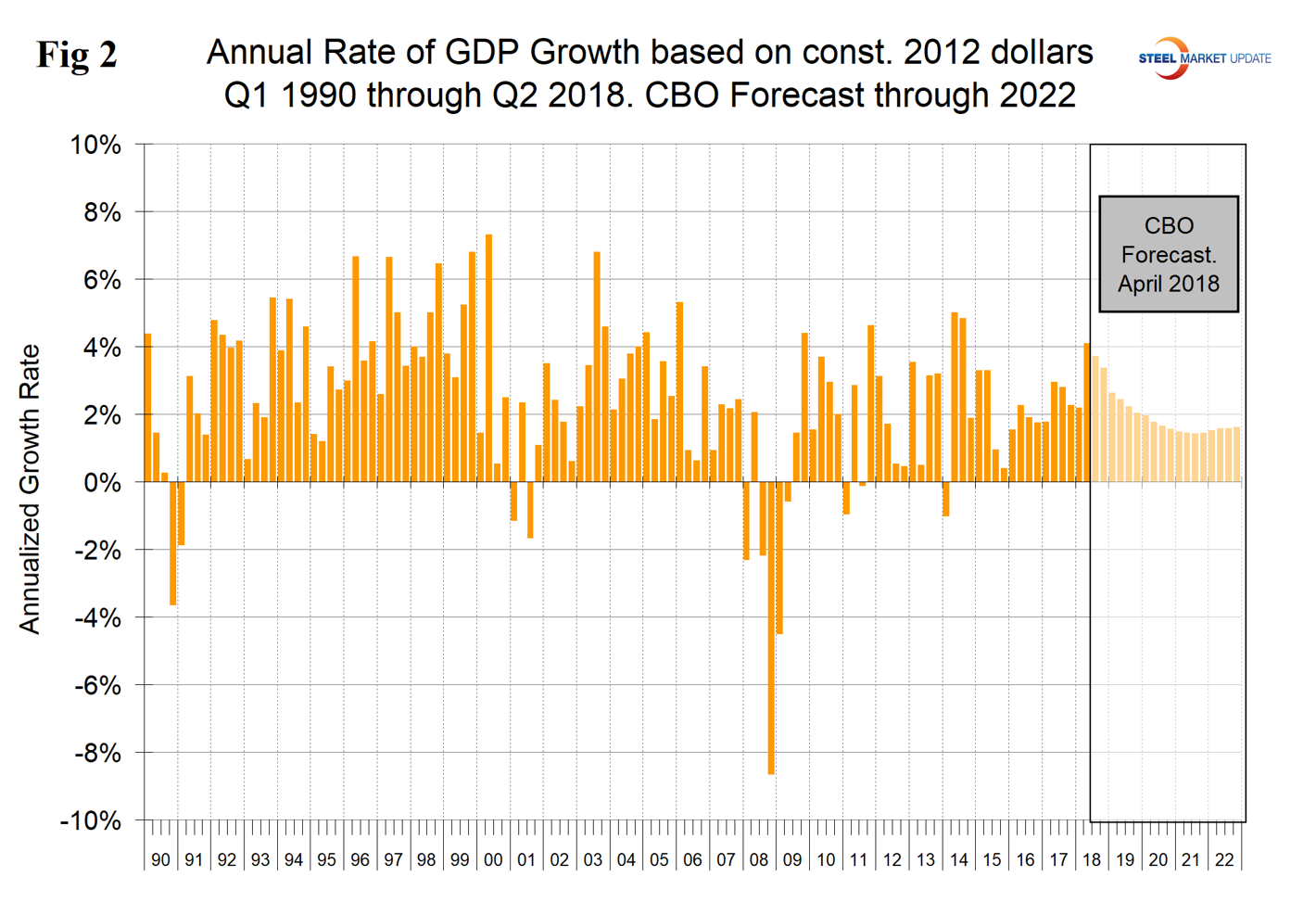
Figure 3 shows the change in the six major subcomponents of GDP in Q2 2018. Normally, personal consumption is the dominant growth driver and this was the case in the second quarter. Personal consumption includes goods and services, the goods portion of which includes both durable and non-durables. The contribution of inventories declined from positive 0.27 percent in Q1 2018 to negative 1.17 percent in Q2 2018. Rising inventories are entered as a positive in the GDP calculation. Note that in the definitions at the end of this piece, inventories are not mentioned. Over the long run, inventory changes are a wash and simply move growth from one period to another. In Q2, the contributions of inventories and net exports did almost an equal and opposite reversal. In Q1, net exports contributed negative 0.02 percent, flipping to positive 1.22 percent in Q2. The contribution of government expenditures was positive 0.43 percent in the second quarter.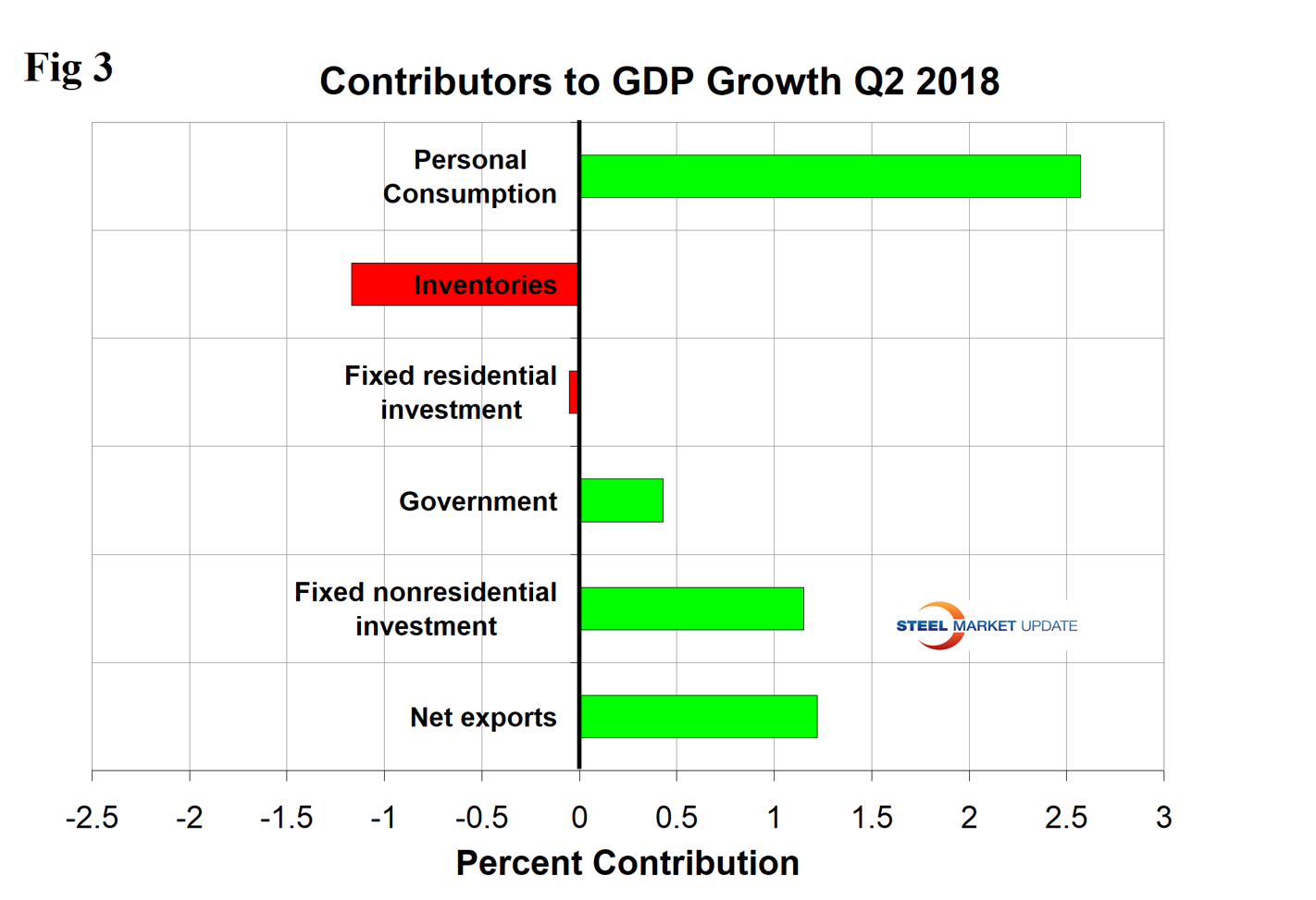
Figure 4 shows the quarterly contributors of the six major subcomponents of GDP since Q1 2007. This chart clearly shows the whipsaw effect of inventory changes. Figure 5 shows the breakdown of the $18.5 trillion economy.
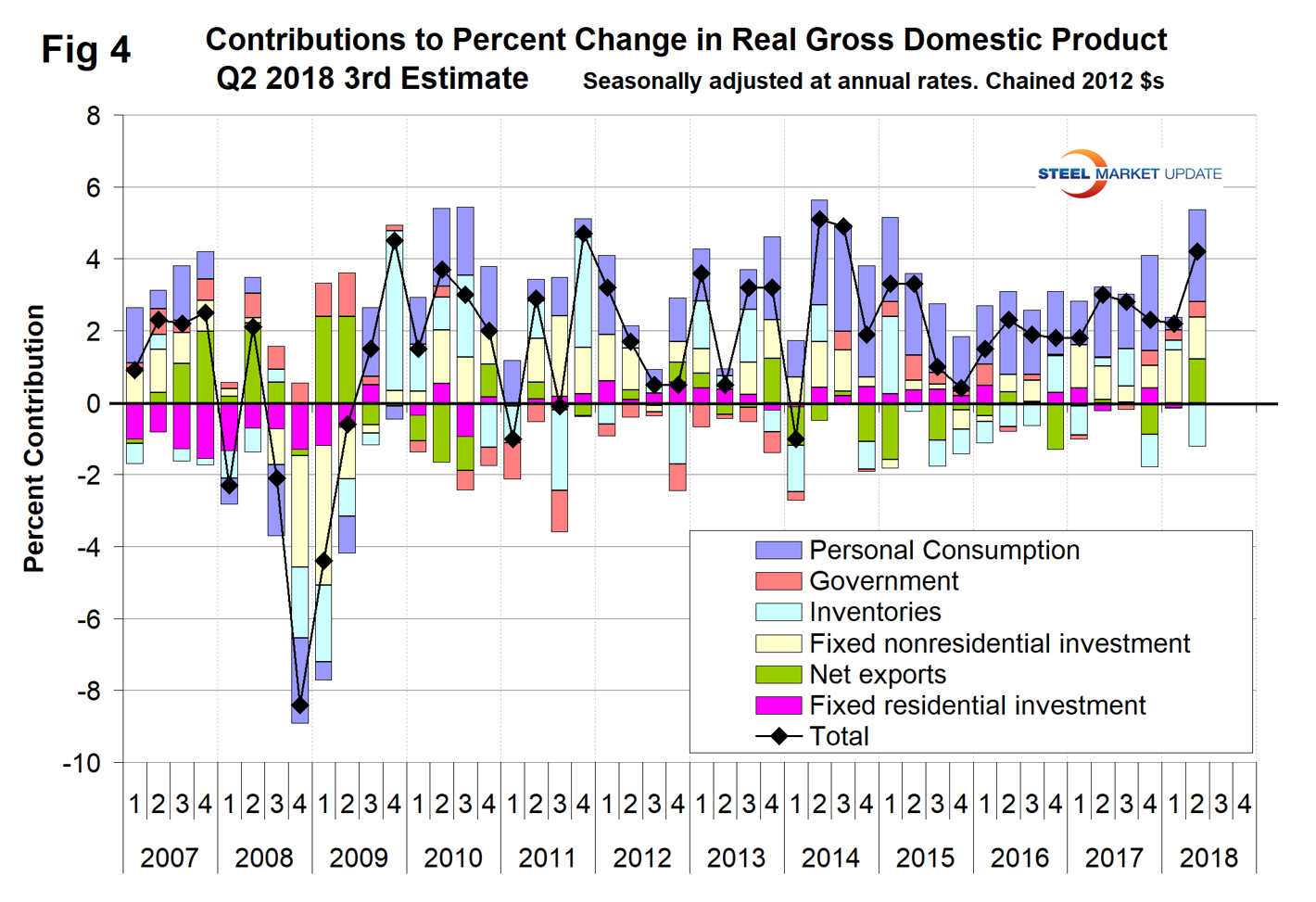
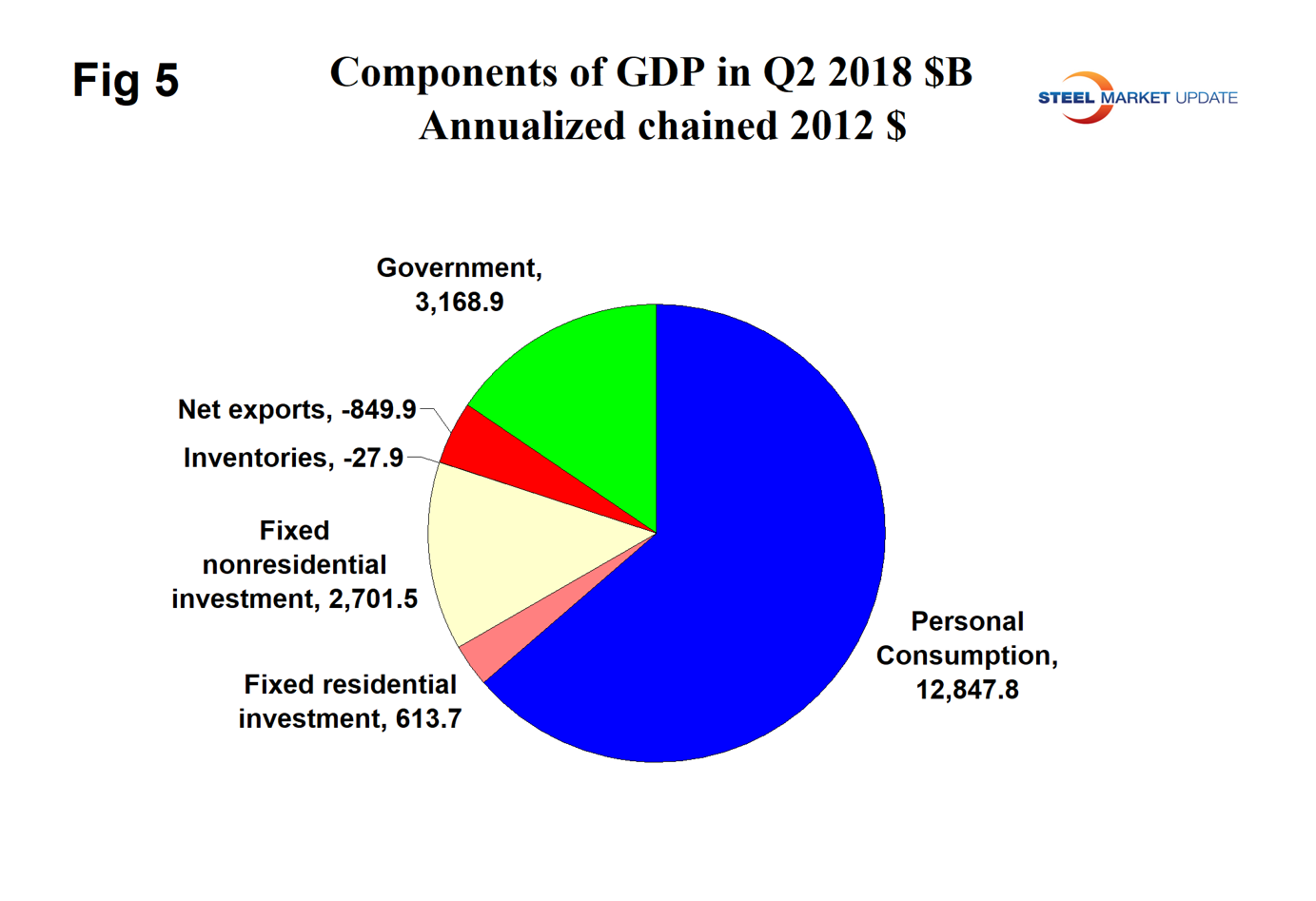
SMU Comment: The results for Q2 exceeded the CBO forecast of a 3.5 percent increase. We should expect a decline in the growth of GDP every quarter from now until Q3 2021 if the CBO forecast is correct. The trailing 12-month growth rate has improved for each of the last eight quarters and in Q2 reached 2.85 percent. We think this is a more valid measure of how the economy is progressing than the headline number. However, the trailing 12-month result is high enough to stimulate growth in steel consumption, which requires about a 2.2 percent growth to break even.
Definition of GDP: Gross domestic product (GDP) is the value of the goods and services produced by the nation’s economy less the value of the goods and services used up in production.
GDP is defined as Consumption (C) plus Investment (I) plus Government Spending (G) plus [Exports (E) minus Imports (I)] or: GDP = C + I + G + (E-I)
National savings is GDP minus (consumption plus government spending). That means that investment equals savings plus net exports. If there are no net exports, then money must come back into the U.S. from outside the country to finance investments, along with savings. Thus, if there is a government deficit, there must be savings by both consumers and businesses, plus capital flows from outside the country, to offset that deficit in order for there to be any money left over for investments.
Another definition of GDP states that it equals the growth in working population multiplied by their productivity.

Peter Wright
Read more from Peter WrightLatest in Economy

New York state manufacturing index drops again in April
Firms were pessimistic, with the future general business conditions index falling to its second lowest reading in the more than 20-year history of the survey

Construction adds 13,000 jobs in March
The construction sector added 13,000 jobs, seasonally adjusted, in March, but tariffs could undermine the industry.

Supply chains, end-users brace for impact from tariffs
Supply chains are working through what the tariffs mean for them

ISM: Manufacturing expansion loses steam after two months of growth
US manufacturing activity slowed in March after two straight months of expansion, according to supply executives contributing to the Institute for Supply Management (ISM)’s latest report.

Chicago Business Barometer rose to 16-month high in March
The Chicago Business Barometer increased for the third-consecutive month in March. Despite this, it still reflects contracting business conditions, as it has since December 2023.
